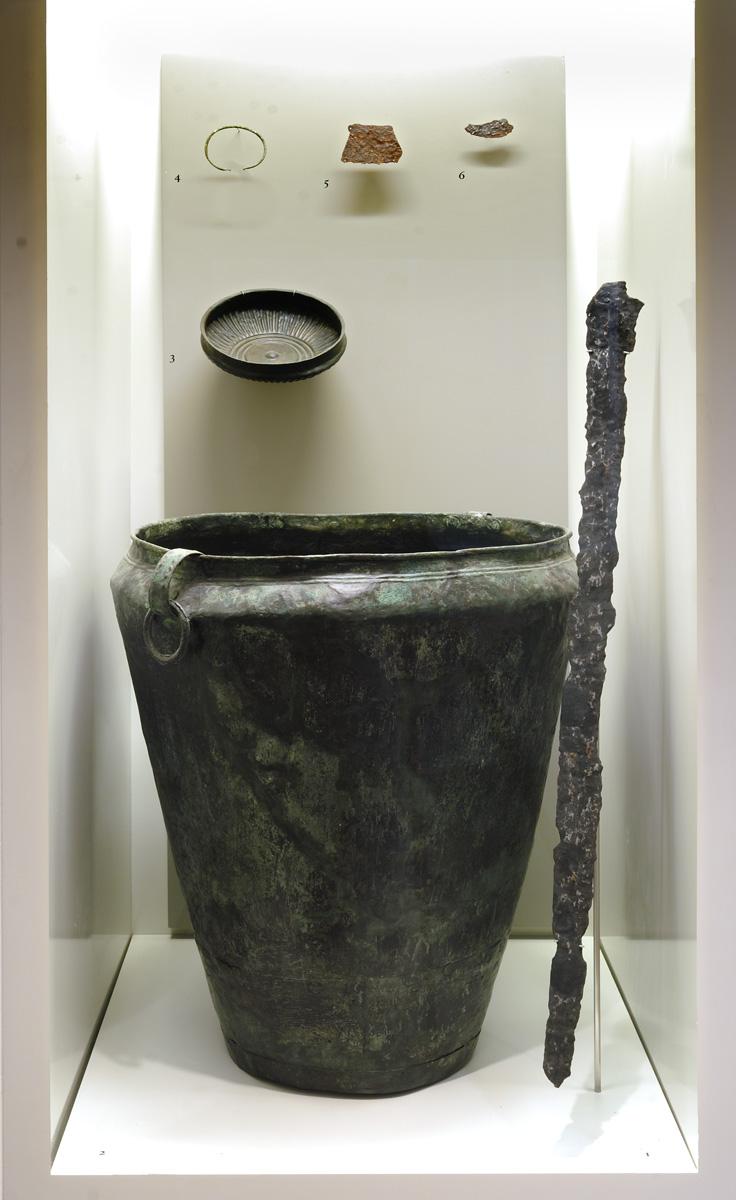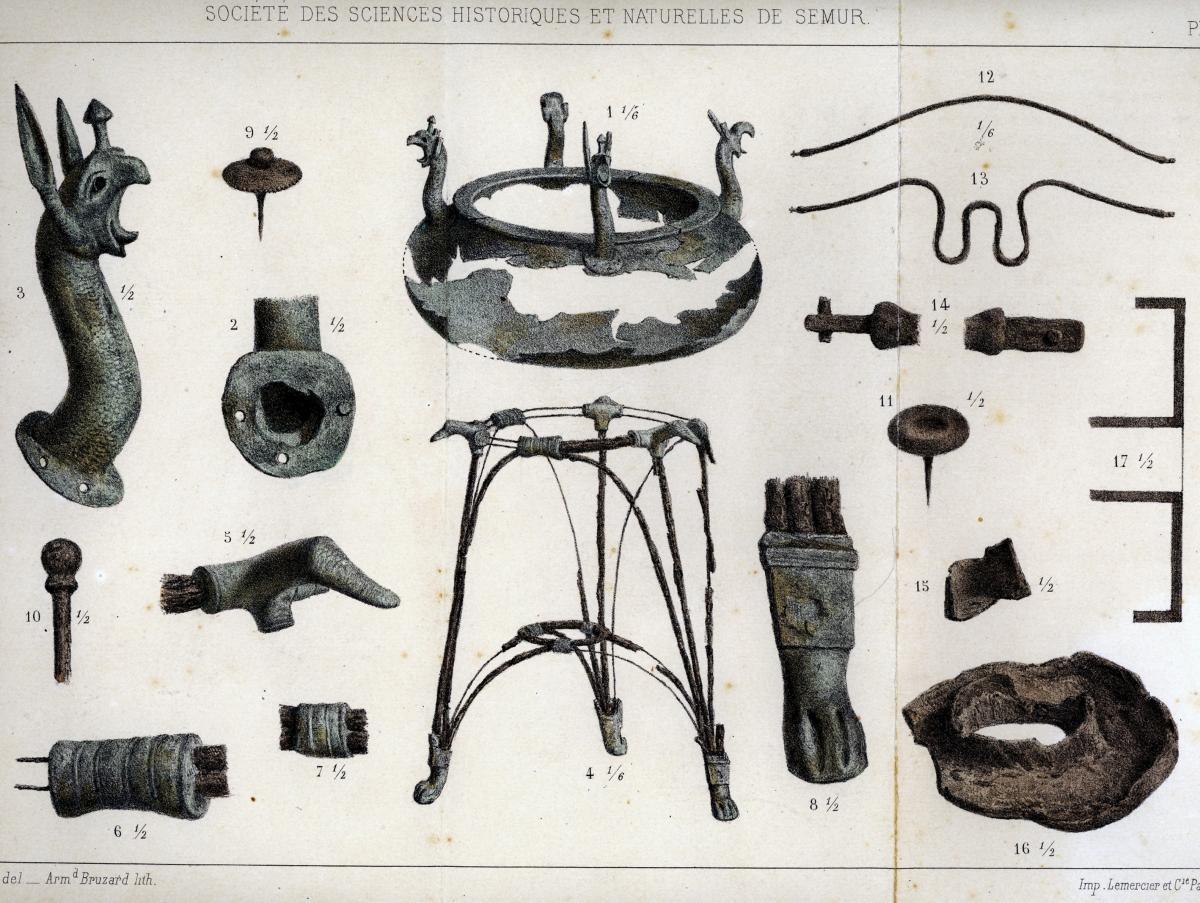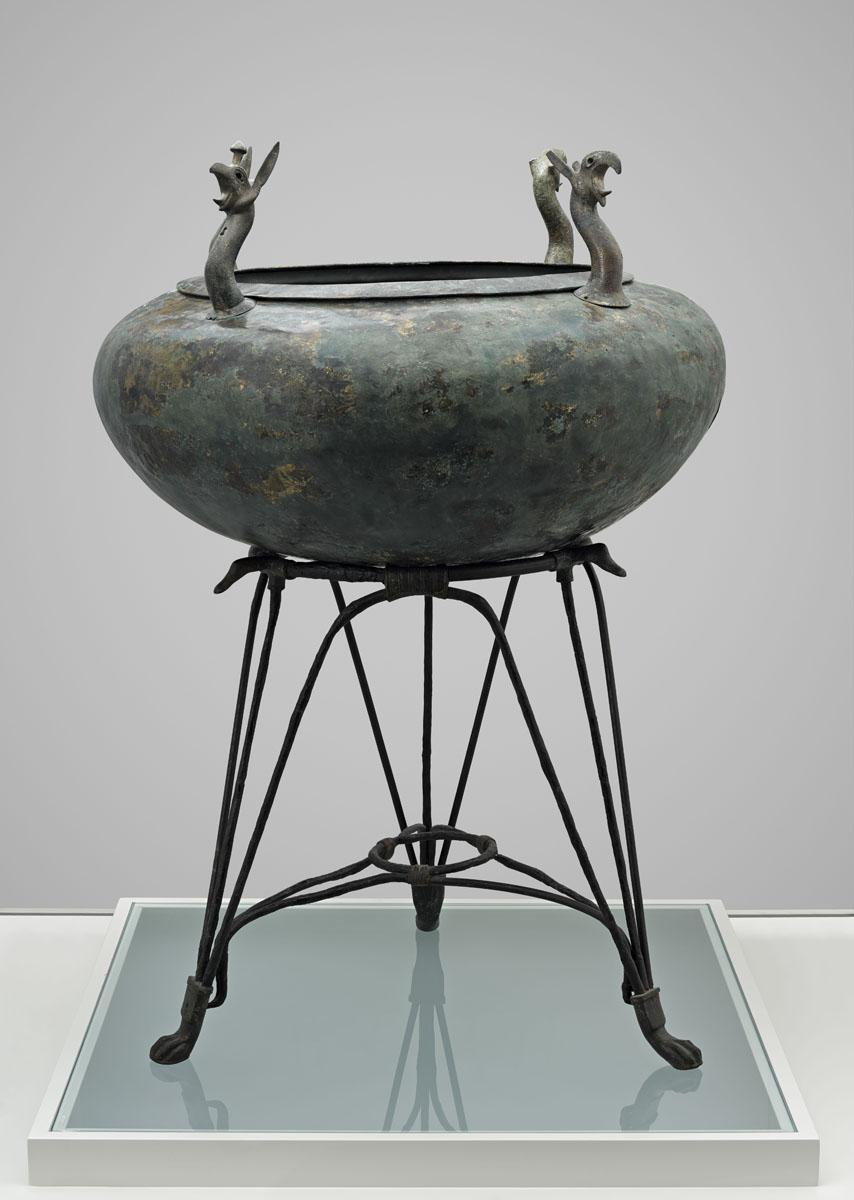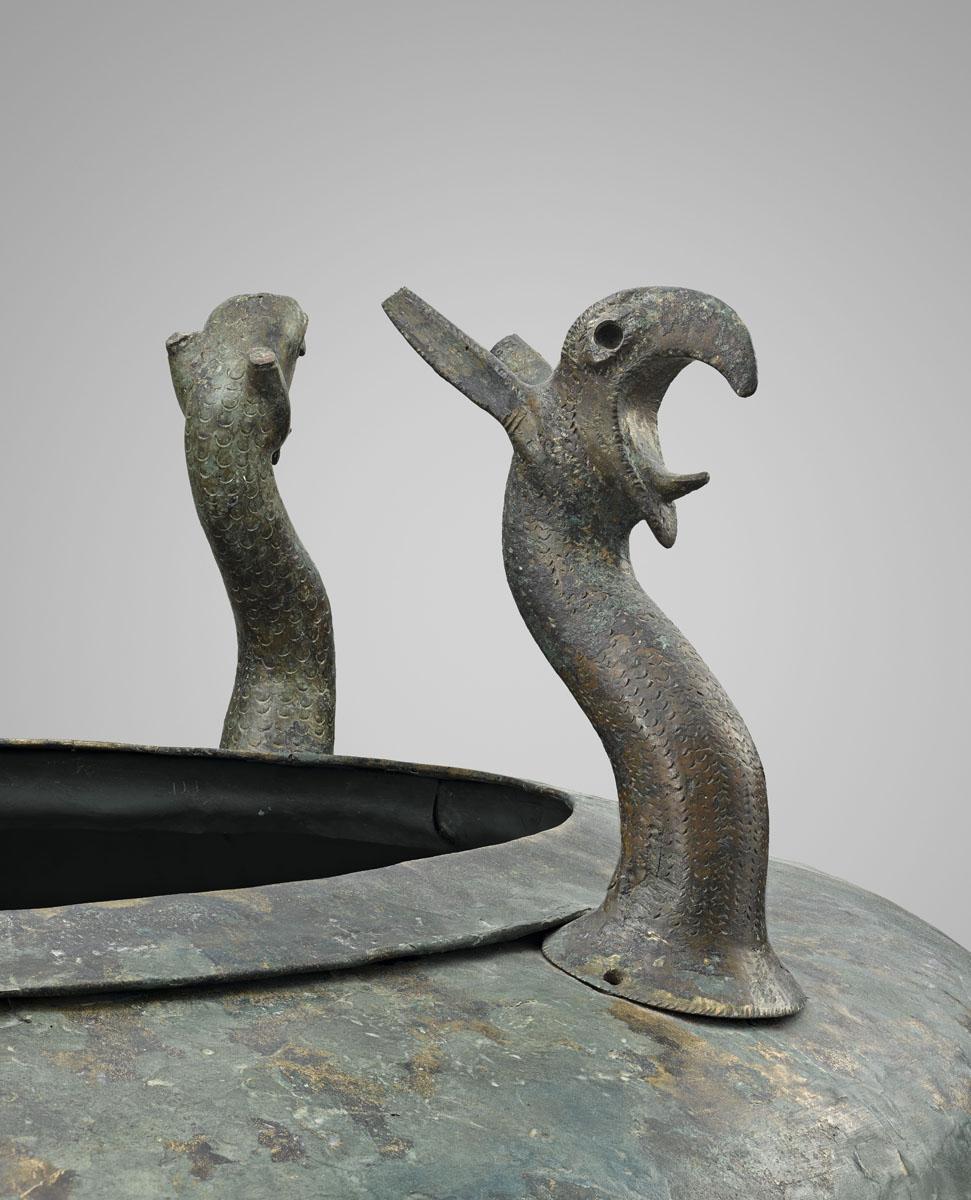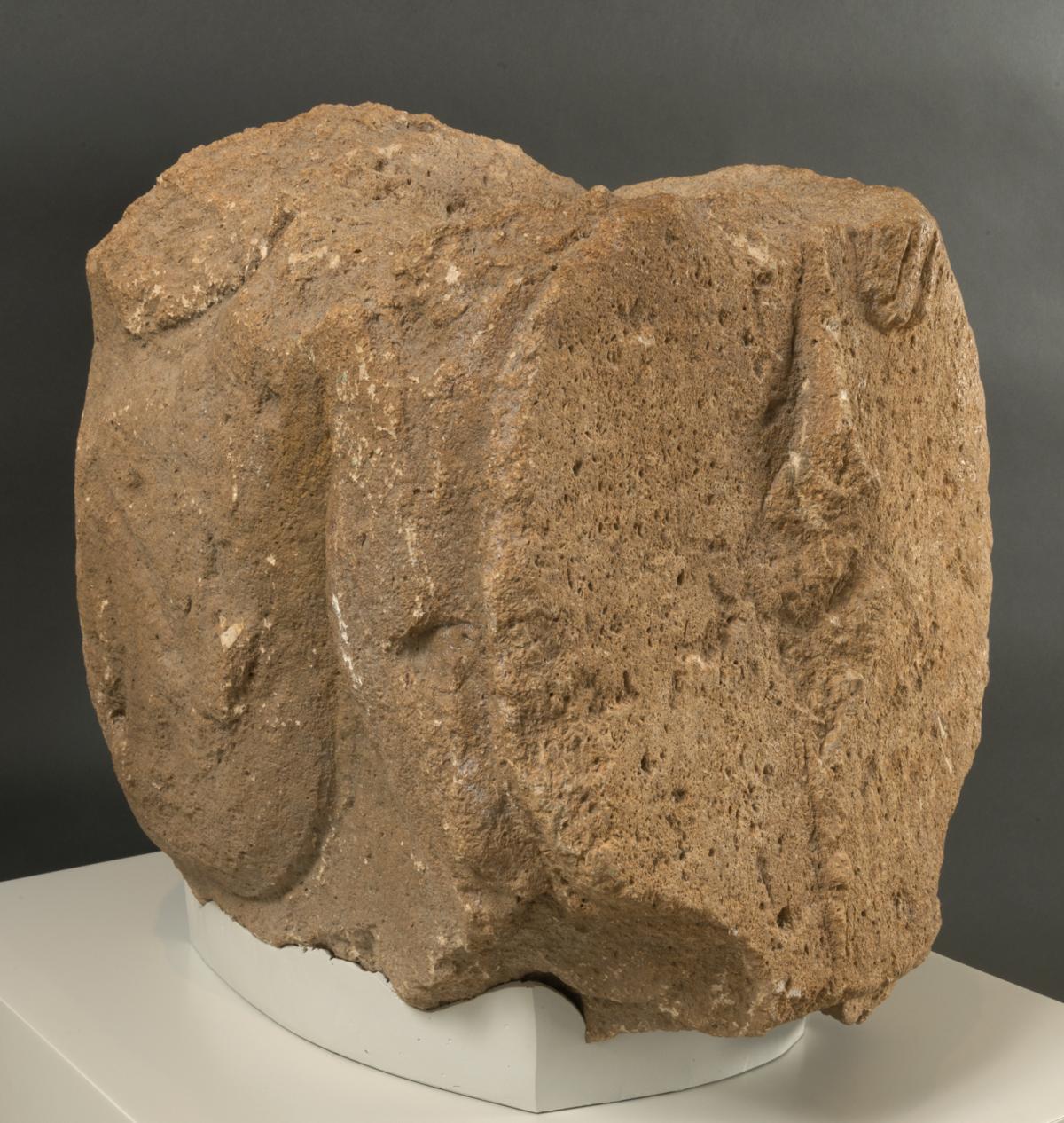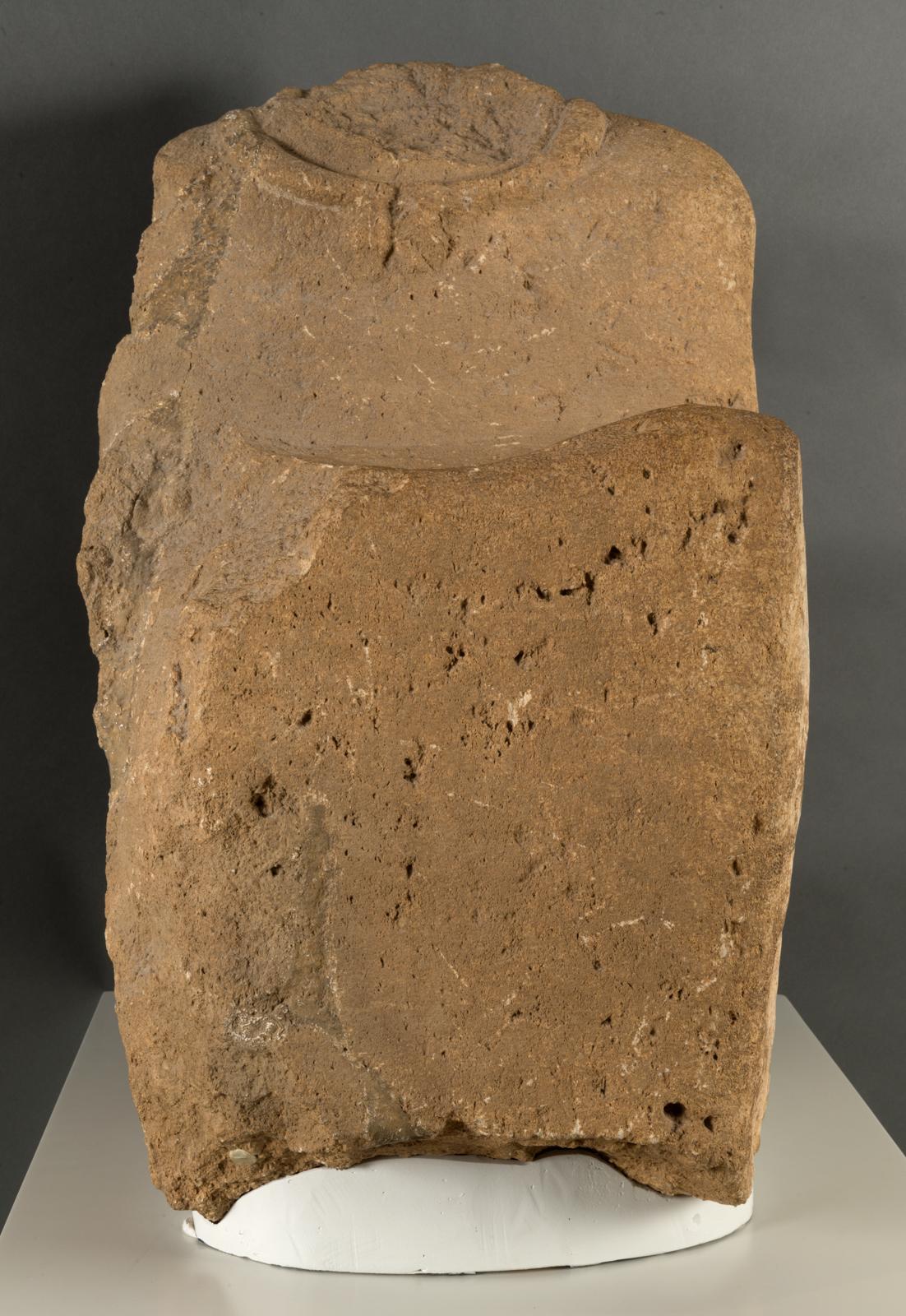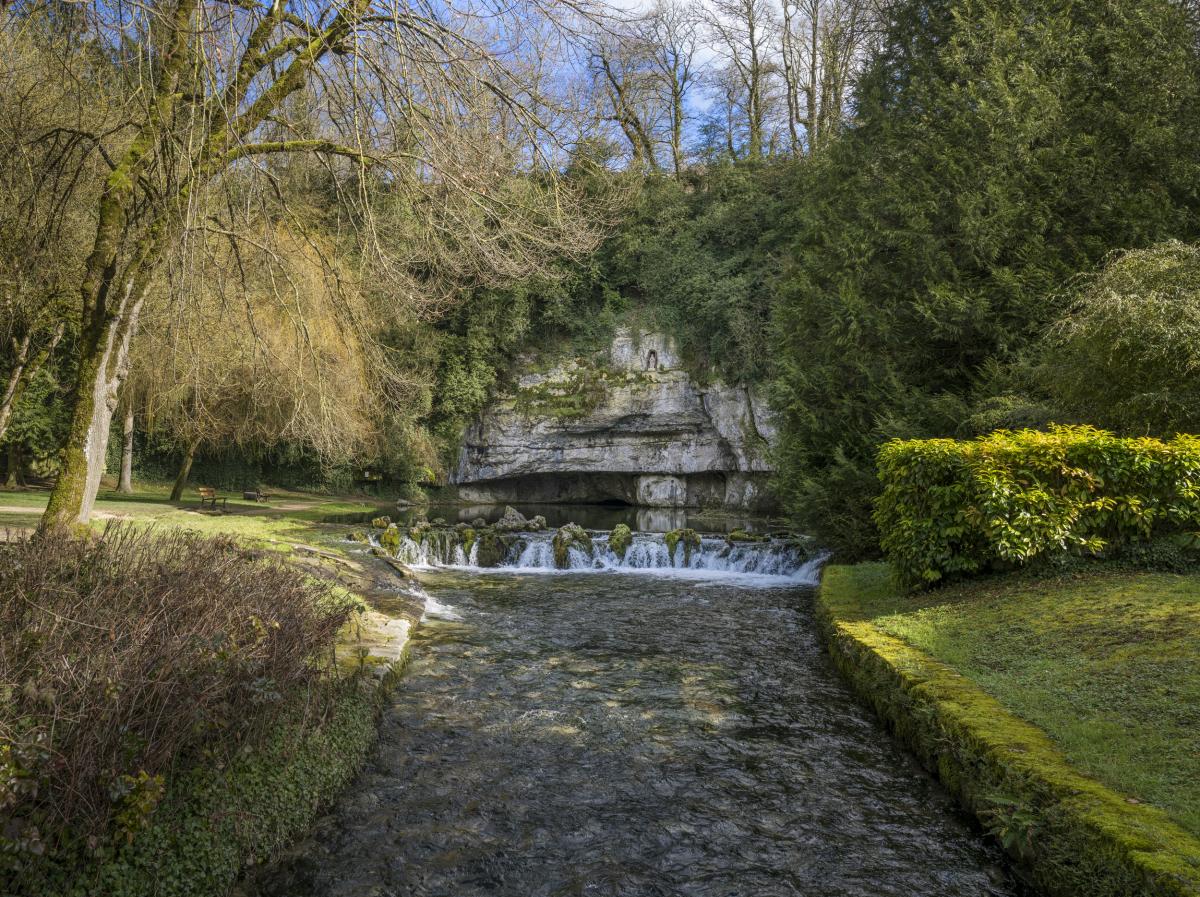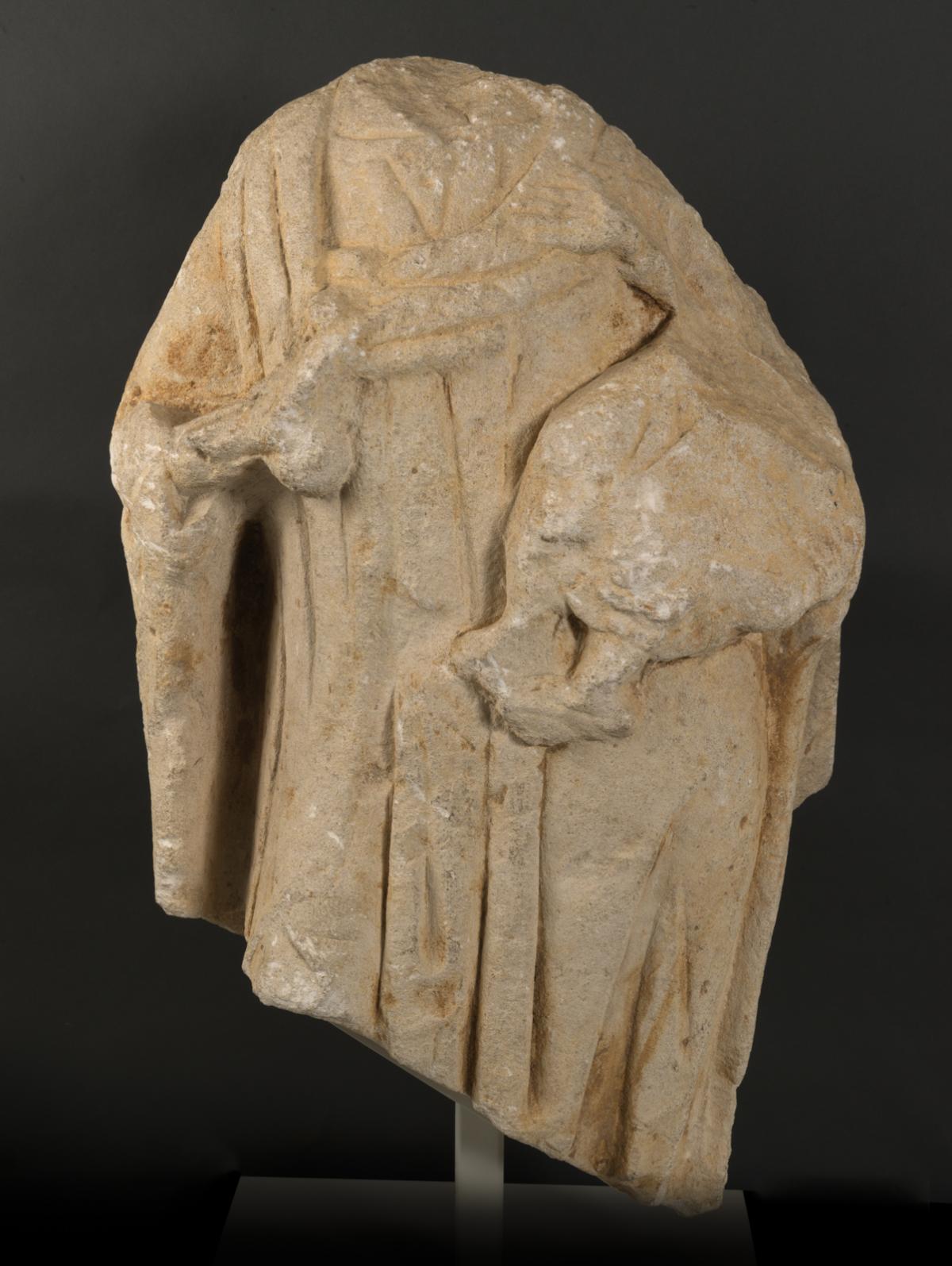At the beginning of the Iron Age, around 800 BC, men with warrior attrubutes were buried under tumulus, a mound of earth and stones. The large iron sword, the razors with elegant motifs and the horse harness indicate that these men must have been horsemen. Military equipment is complemented by metal tableware used to consume alcoholic beverages. In the first showcase, the Etruscan situla from northern Italy, which contained the drink, and the bronze phiale cup, used to serve the drink to the gods, illustrate the banquets attended by this emerging social elite in Western Europe. At the dawn of iron metallurgy, owning a sword had a high symbolic value, since its manufacture was still a matter of technical prowess. The banquet dishes imported from Italy underlined the prestige of the deceased.

